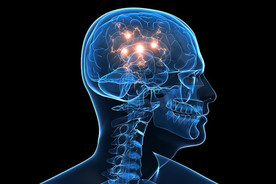 Since the 1990’s (referred to as the decade of the brain) modern science has been committed to making a positive, significant, lasting difference in the way individuals learn. Let’s play with these insights:
Keeping these insights in mind, why are more individuals in schools, taking sport instruction and business training courses not reaching their potential then those that do? This unfortunate reality has caused some research into the nature of learning and some rethinking about how student’s best learn anything, even golf. Studies show that “teaching fixing to get it right” approaches to learning are not only different from “learning developing” approaches that take place in student centered environments, they give less return on the investment of time and resources involved. Efficient learning environments develop self-reliant individuals with lifelong problem solving skills for use in real world ever changing environments beyond classrooms, practice fields, and business training. In a Teaching-Fixing to get it right environment if a student said 2 + 2 = 5, they would hear wrong! And self-image is damaged. In a Learning-Developing environment they would be asked to review how they arrived at that answer. In Teaching-Fixing environment students often say you know what I learned today, “I can’t spell,” or “I am bad at math”, or “I can’t read”, or “I have a bad golf swing.” In teaching-environment individuals have concerns before the test, or before they perform, in a learning-environment individual’s self-asset after they act. The term Teach is not used in Webster’s definitions of education or learn. Approaches to education that see themselves as being in the information business are not as efficient as those who see themselves as being in the student business. Information does not produce good education any more than paint produces good art.  Teaching environments are often evaluating, learning environments are caretakers of learning skills. Learning environments shine a light; they don’t try to get it right. Teaching environments are often trying to manage failure, learning environments are supporting growth. I have no firsthand knowledge of how most individuals would define the terms “learning” and “teaching.” But after gathering information for over 20 years from studies by leading educators and scientists, it is now my guess that what many people believe about learning and teaching can fragment long-term progress. Are we given a good education, or do we earn and gain a good education? There is a difference, and the latter is the point of view taken here. The information that follows is trying to reconcile, rather than to contrast previous points of view about acts of learning and teaching with what modern sciences has uncovered about the nature of learning and teaching with the brain in mind, (as Eric Jensen suggests in his book with that title). The Good News: Modern science has uncovered previously unknown insights into the nature of the learning process that allows individuals to have more influence over their own pace of progress when they are learning anything, even golf. These topics I’ve been invited to speak about at Yale, M.I.T., on the Charlie Rose TV show, in School Districts and business environments. The Bad News: Most individuals are unaware of this research into how they can enhance their ability to learn. The views and research presented here put a light on the nature of learning and brain compatible learning principles. Seeing the following as filled with answers will diminish its value. This should be seen as a compass, not as a map. The point of view here is, when learning receiving accurate information is only one side of the story; an efficient student centered brain compatible approach to learning and teaching is also required. That results are founded on approaches is an insight that is so often overlooked. Efficient approaches to learning minimize the extent to which students will perceive themselves as falling behind other students. By Michael Hebron, PGA MP CI Part 2 Next Week  PGA Master Professional Michael Hebron PGA Master Professional Michael Hebron Decades ago Michael Hebron played a key role in orchestrating the first PGA Teaching and Coaching Seminar, bringing together instructors from across the country to share ideas on teaching methods. Following that event, Michael gained the nickname of "the teacher's teacher". Highly respected throughout the international golf community, Michael consults on golf instruction to PGA Switzerland, Italy, France, Finland, Canada, Japan and Sweden. He has given instruction clinics at 30 PGA of America sections. Through his dedication Michael earned the honored status of becoming the 24th PGA of America Master Professional. His book, See and Feel the Inside Move the Outside, was the first golf instruction book accepted as a PGA Master’s thesis. Since then, he has written hundreds of articles for leading golf magazines and authored 4 other books and 3 DVDs. Michael has appeared on The Charley Rose Show, Today Show, The Golf Channel and numerous local cable shows. Golf Magazine and Golf Digest have consistently named Hebron as a member (since their first listings) of America’s Top 50 Instructors. Over the years, Hebron has worked with many successful golfers from the PGA and LPGA tours and several national champions in America and abroad including three time men's major winners. He has also worked with many successful high school and college golfers—but Michael’s pride is working with club golfers. You can contact Michael through his website at http://www.michaelhebron.com/ or through his Facebook page at https://www.facebook.com/neurolearninggolf.live Comments are closed.
|
Archives
June 2019
|
Proudly Supported By
Copyright © 2011 - 2018 Pro Tour Golf College
Website Managed By Golf Performance Media
All Rights Reserved
Website Managed By Golf Performance Media
All Rights Reserved


 RSS Feed
RSS Feed



